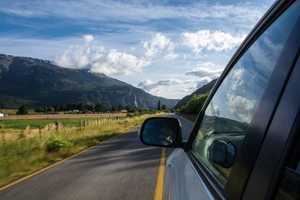
Michigan drivers not only have a duty to observe and follow the rules regarding the operating of a motor vehicle on the open road, but they also have the duty to keep the vehicle in safe and working order. A police officer may stop a motor vehicle and inspect it on reasonable grounds shown (e.g. cracked windshield, loud exhaust, broken light) and, if a defect in equipment is found, the officer may issue the driver a citation. MCL 257.683(2). If the police officer finds the motor vehicle’s necessary equipment is in unsafe or non-working condition, then the driver may be responsible for a civil infraction punishable by a fine.
Some very common defective violations include, but are not limited to the following:
- ONE OR NO HEADLIGHTS: Motor vehicles shall be equipped with at least 2 head lamps with at least 1 head lamp on each side of the front of the motor vehicle (motorcycle and mopeds may have one but not more than two). MCL 257.685. Both lights must be in operable condition.
- REAR TAILLIGHT: Motor vehicles shall be equipped with at least one 1 rear lamp mounted on the rear, which, when lighted as required by this act, shall emit a red light plainly visible from a distance of 500 feet to the rear. MCL 257.686(1).
- LICENSE PLATE LIGHT: A tail lamp or a separate lamp must illuminate with a white light the rear registration plate and render it clearly legible from a distance of 50 feet to the rear. MCL 257.686(2).
- TRAILER CLEARANCE LIGHTS: On every trailer, pickup camper, or semitrailer having a gross weight in excess of 3,000 pounds, the following (MCL 257.688(d)):
- On the front, 2 clearance lamps, 1 at each side.
- On each side, 2 side marker lamps, 1 at or near the front and 1 at or near the rear.
- On each side, 2 reflectors, 1 at or near the front and 1 at or near the rear.
- On the rear, 2 clearance lamps, 1 at each side, also 2 reflectors, 1 at each side, and 1 stop light.
- TRAILER STOP LIGHTS: On every trailer, pickup camper, or semitrailer weighing 3,000 pounds gross or less, on the rear, 2 reflectors, 1 on each side if any trailer or semitrailer is so loaded or is of such dimensions as to obscure the stop light on the towing vehicle, then such vehicle shall also be equipped with 1 stop light. MCL 257.688(f).
- FAILURE TO DISPLAY SLOW-MOVING VEHICLE EMBLEM: Every vehicle with a maximum potential speed of 25 miles per hours, farm tractor and modified agriculture vehicle shall have an equilateral triangle in shape, at least 16 inches wide at the base and at least 14 inches in height: with a dark red border, at least 1-3/4 inches wide of highly reflective beaded material and a center triangle, at least 12-1/4 inches on each side of yellow-orange fluorescent material. MCL 257.688(g).
- MISSING CLEARANCE LIGHTS AND REFLECTORS: Clearance, marker lamps and reflectors should be equipped as follows:
- Front clearance lamps and those marker lamps and reflectors mounted on the front or on the side near the front of a vehicle shall display or reflect an amber color. MCL 257.689(a).
- Rear clearance lamps and those marker lamps and reflectors mounted on the rear or on the sides near the rear of a vehicle shall display or reflect a red color. MCL 257.689(b).
- All lighting devices and reflectors mounted on the rear of any vehicle shall display or reflect a red color, except the stop light or other signal device, which may be red or amber, and except that the light illuminating the license plate shall be white. MCL 257.689(c).
- Every reflector upon any vehicle shall be of such size and characteristics and so maintained as to be readily visible at nighttime from all distances within 500 feet to 50 feet from the vehicle when directly in front of lawful upper beams of headlamps. Reflectors required to be mounted on the sides of the vehicle shall reflect the required color of light to the sides, and those mounted on the rear shall reflect a red color to the rear. MCL 257.691(a).
- Front and rear clearance lamps shall be capable of being seen and distinguished under normal atmospheric conditions at the times lights are required at a distance of 500 feet from the front and rear, respectively, of the vehicle. MCL 257.691(b).
- Side marker lamps shall be capable of being seen and distinguished under normal atmospheric conditions at the times lights are required at a distance of 500 feet from the side of the vehicle on which mounted. MCL 257.691(c).
- LONG LOAD MARKED AND FLAGGED: Whenever the load upon any vehicle extends to the rear 4 feet or more beyond the bed or body of such vehicle there shall be displayed at the extreme rear end of the load, at the times required by law, a red light or lantern plainly visible from a distance of at least 500 feet to the sides and rear. At any other time there shall be displayed at the extreme rear end of such load a red flag or cloth not less than 12 inches square and so hung that the entire area is visible to the driver of a vehicle approaching from the rear. MCL 257.693.
- NO BRAKE LIGHTS AND TURN SIGNALS: No person may operate a vehicle on the highway manufactured or assembled after January 1st, 1955, must be equipped with two brake lamps emitting a red color and working two electric turn signals emitting a white or amber light. MCL 257.697a.
- DEFECTIVE BRAKES: All brakes shall be maintained in good working order and shall be adjusted in a manner as to operate as equally as practicable with respect to the wheels on the opposite side of the vehicle. MCL 257.705(5). Vehicles with brakes on all wheels should be able to decelerate 14 feet per second over 30 feet in a vehicle moving at 20 miles per hour. Vehicles that do not have brakes on all wheels should be able decelerate 10.7 feet per second over 40 feet in a vehicle moving at 20 miles per hour. MCL 257.705(2).
- NO TRAILER BRAKES: A trailer or semitrailer of a gross weight of 15,001 pounds or more when operated upon a highway shall be equipped with brakes operating on all wheels and designed to be applied by the driver of the towing motor vehicle from its cab. MCL 257.705(1)(c).
- NO EMERGENCY BRAKES: Parking brakes and service brakes should be constructed in a manner that failure of one part does not leave the vehicle without operative brakes. MCL 257.705(1)(c).
- NO HORN: A motor vehicle, including a motorcycle or moped, when operated upon a highway shall be equipped with a horn in good working order and capable of emitting sound audible under normal conditions from a distance of not less than 200 feet but a horn or other warning device shall not emit an unreasonably loud or harsh sound or a whistle. MCL 257.706(a).
- DEFECTIVE MUFFLER: A motor vehicle, including a motorcycle or moped, shall at all times be equipped with a muffler in good working order and in constant operation to prevent excessive or unusual noise and annoying smoke. A person shall not remove, destroy, or damage any of the baffles contained in the muffler, nor shall a person use a muffler cutout, bypass, or similar device upon a motorcycle or moped on a highway or street. MCL 257.707(a).
- EXCESSIVE SMOKE: The engine and power mechanism of a motor vehicle shall be so equipped and adjusted as to prevent the escape of excessive fumes or smoke. MCL 257.707(b).
- DEFECTIVE EXHAUST SYSTEM: A motor vehicle shall at all times be equipped with a properly operating exhaust system which shall include a tailpipe and resonator on a vehicle where the original design included a tailpipe and resonator. MCL 257.707(c).
- NO OUTSIDE OR REARVIEW MIRRORS: A person shall not drive a motor vehicle on a highway which is so constructed or loaded as to prevent the driver from obtaining a view of the highway to the rear by looking backward from the driver’s position, unless the vehicle is equipped with a mirror located so as to reflect to the driver a view of the highway to the rear of the vehicle. In addition all motor vehicles shall be equipped with an outside rearview mirror on the driver’s side which shall be positioned to give the driver a rear-viewing angle from the driver’s side of the vehicle, except a motor vehicle licensed as an historic vehicle if the vehicle was not originally equipped with an outside rearview mirror. Rearview mirrors may be positioned on the helmet or visor worn by the operator of a motorcycle if the helmet is securely attached to the head of the operator. Every commercial vehicle of 1/2 ton capacity or more, operating upon the public highways of this state, shall be equipped with 2 mirrors, 1 on each side, adjusted so that the operator shall have a clear view of the highway behind the commercial vehicle. MCL 257.708.
- DEFECTIVE WINDSHIELD: A motor vehicle shall not be operated on the public highways of this state unless it is equipped with a windshield of sufficient dimensions to protect the driver and occupants from insects, other airborne objects, and highway surface water and debris, when the motor vehicle is moving forward (except for tractors and implements of husbandry). The windshield cannot be cracked or shattered. MCL 257.708a.
- DEFECTIVE WINDSHIELD WIPERS: The windshield on each motor vehicle shall be equipped with a device for cleaning rain, snow, or other moisture from the windshield, which device shall be so constructed as to be controlled or operated by the driver of the vehicle. A vehicle licensed as an historical vehicle is exempt from this subsection if the vehicle was not originally equipped with such a device. Each windshield wiper upon a motor vehicle shall be maintained in good working order. MCL 257.709(4).
- NON-TRANSPARENT MATERIAL ON WINDSHIELD OR SIDE WINDOW: A person shall not operate a motor vehicle with a sign, poster, nontransparent material, window application, reflective film, or nonreflective film upon or in the front windshield, the side windows immediately adjacent to the driver or front passenger, or the sidewings adjacent to and forward of the driver or front passenger, except that a tinted film may be used along the top edge of the windshield and the side windows or sidewings immediately adjacent to the driver or front passenger if the material does not extend more than 4 inches from the top of the windshield, or lower than the shade band, whichever is closer to the top of the windshield. MCL 257.709(1)(a).
- OBSTRUCTED REAR OR SIDE WINDOW: A person shall not operate a motor vehicle with a rear window or side window to the rear of the driver composed of, covered by, or treated with a material that creates a total solar reflectance of 35% or more in the visible light range, including a silver or gold reflective film. MCL 257.709(1)(b).
- OBSTRUCTED REAR WINDOW AND NO SIDE MIRRORS: A person shall not drive a motor vehicle if driver visibility through the rear window is obstructed, unless the vehicle is equipped with 2 rearview mirrors, 1 on each side, adjusted so that the operator has a clear view of the highway behind the vehicle. MCL 257.709(2).
- DEFECTIVE TIRES: A person shall not operate a vehicle on a highway when a tire in use on that vehicle is unsafe due to having a part of the belting material, tire cords or plys exposed, having evidence of cord of tread separations, or is excessively worn down. MCL 257.710(f).
- OVER-HEIGHT BUMPER: A person shall not operate a vehicle where the bumper height exceeds the following limits (MCL 257.710c(2)):
- Passenger vehicle – 22 inches
- Other motor vehicle less than 4,501 pounds gross vehicle weight rating – 26 inches
- Other motor vehicle between 4,501 and 7,500 pounds gross vehicle weight rating – 28 inches
- Other motor vehicle between 7,501 and 10,000 pounds gross vehicle weight rating – 30 inches
- NO SAFETY GLASS: Any glass sold or replaced in a motor vehicle that is used in doors, windows and windshields must be safety glass. MCL 257.711.
- DEFECTIVE SAFETY CHAINS: A vehicle or trailer towed or drawn by a vehicle shall be attached to the vehicle with forms of coupling devices in a manner so that when the combination is operated in a linear alignment on a level, smooth, paved surface, the movement of the towed or drawn vehicle or trailer does not deviate more than 3 inches to either side of the path of the towing vehicle that tows or draws it. The vehicle or trailer shall also be connected to the towing vehicle by suitable safety chains or devices, 1 on each side of the coupling and at the extreme outer edge of the vehicle or trailer. Each chain or device and connection used shall be of sufficient strength to haul the vehicle or trailer when loaded. In the case of an implement of husbandry with a gross vehicle weight rating or gross combination weight rating of 10,000 pounds or less, the safety chains or devices required under this subsection shall conform to the federal motor carrier safety regulations requirements. MCL 257.721(3).
- NO IDENTIFICATION ON COMMERCIAL VEHICLE: All towing or platform bed wreckers or road service vehicles in operation upon the public highways of this state shall have the name, city, and state or the registered logo or emblem of the registered owner of the vehicle, and lessee of the vehicle if the vehicle is being operated under lease, painted or permanently attached on each side of the vehicle in letters of not less than 3 inches in height, not lower than the bottom edge of the door. This information shall be in sharp color contrast to the background. MCL 257.723(1).
- CATCH-ALL PROVISION: A person shall not drive or move or the owner shall not cause or knowingly permit to be driven or moved on a highway a vehicle or combination of vehicles that is in such an unsafe condition as to endanger a person. MCL 257.683(1). This includes unspecified defective equipment violations such as defective steering or other unmaintained equipment.
A person accused of a civil infraction is not required to admit responsibility and can request a formal or informal hearing before a district court judge or magistrate. Since defective equipment is considered a non-moving violation that carries no points or license sanctions, most drivers usually opt to accept responsibility and move on. Before simply electing to pay the ticket at the district court office, you should be aware that the civil infraction is waivable if you correct the mistake and show proof to the police agency that issued the citation. “If a person has received a civil infraction citation for defective safety equipment on a vehicle, the court shall waive a civil fine, costs, and assessments upon receipt of certification by a law enforcement agency that repair of the defective equipment was made before the appearance date on the citation.” MCL 257.907(9). Unless there is a specific date on the ticket, the appearance date is usually 10 days from the date of citation. As always, you can consult with an attorney before taking any legal action to become better apprised of your rights under the law.
If you or a loved one is accused of defective equipment or any traffic violation and have additional questions, do not hesitate to contact the experienced lawyers at Kershaw, Vititoe & Jedinak PLC today.





